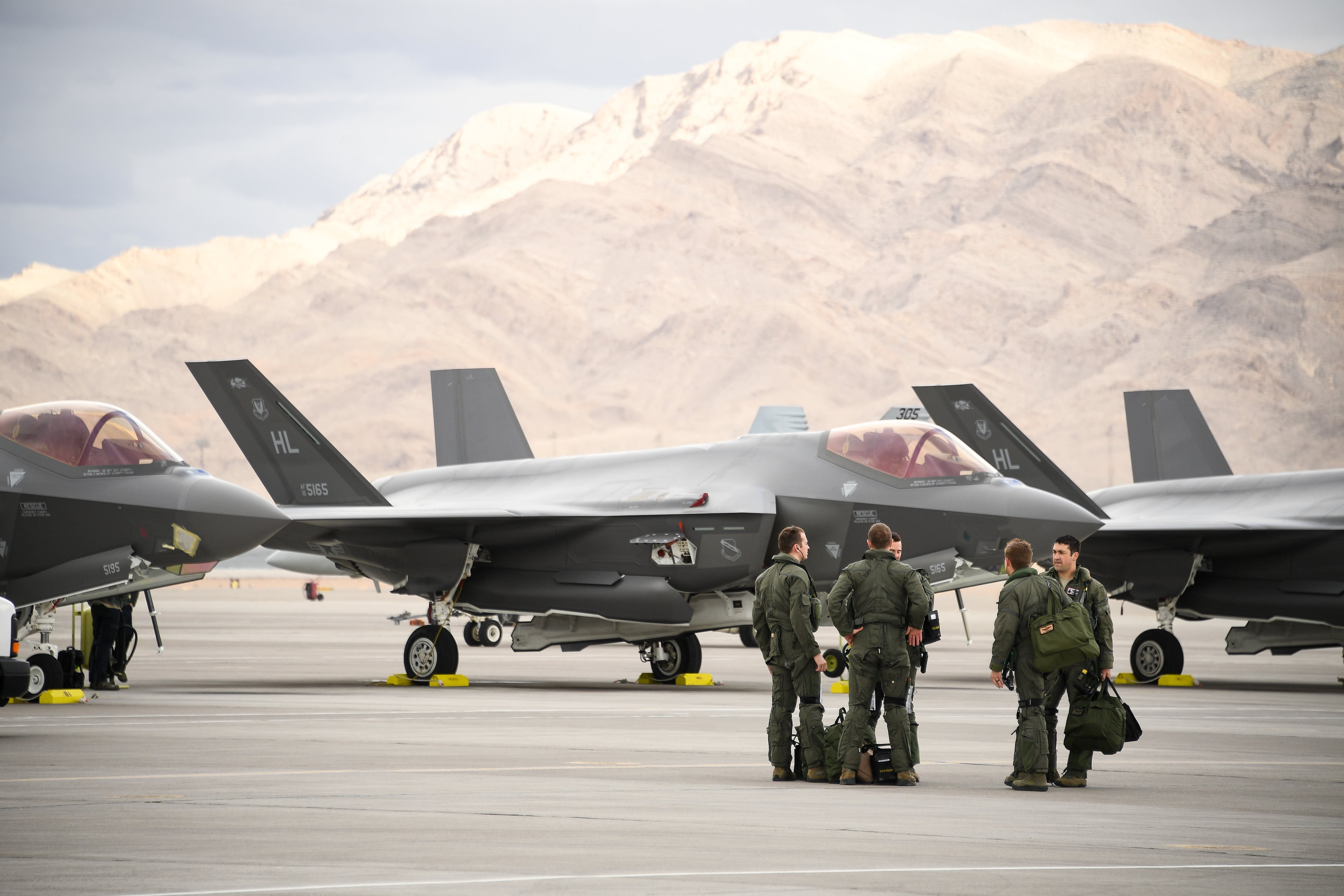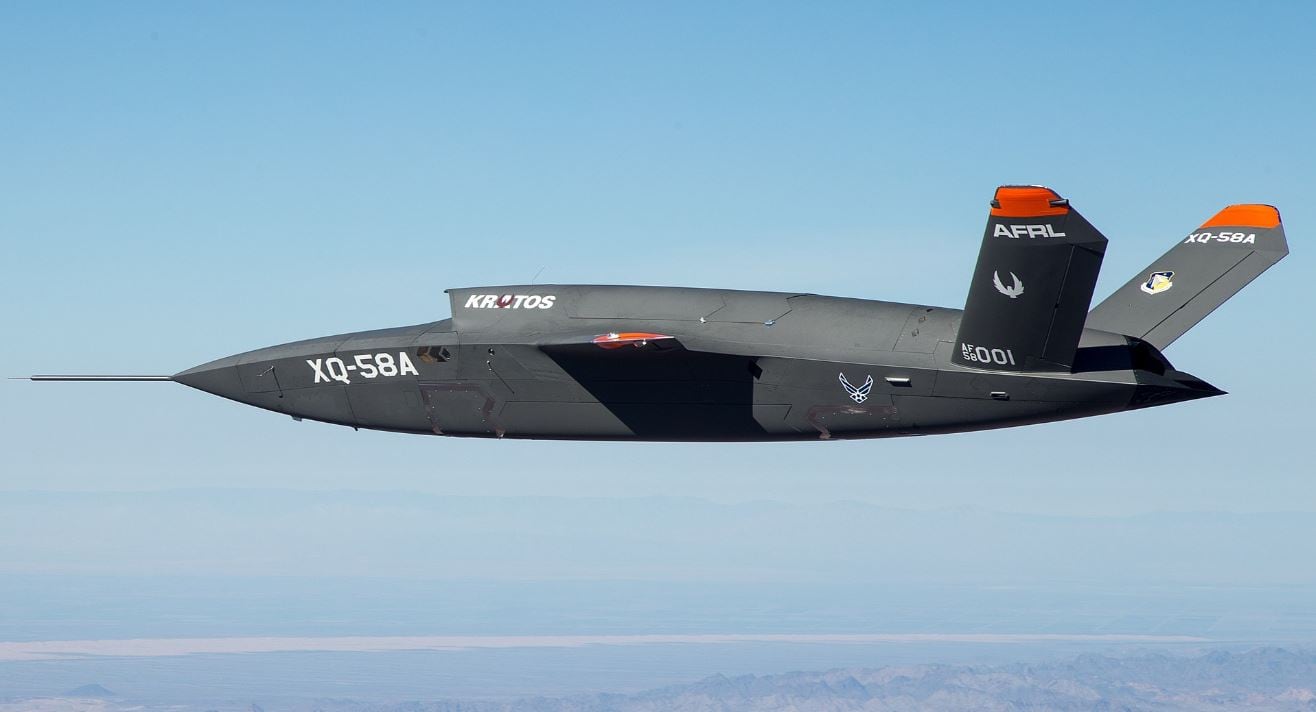The XQ-58A Valkyrie demonstrator, a long-range, high-subsonic unmanned combat air vehicle, completed its inaugural flight Tuesday at Yuma Proving Grounds, in Arizona.
The Air Force’s fleet of current drones, such as the MQ-9 Reaper, are basically giant gas bags that fly — able to loiter for long periods above friendly forces in order to provide armed overwatch and intelligence. But the airspace over future battlefields will likely not be permissive, and so new drones will need to be developed.
XQ-58A Valkyries were developed under the low-cost attritable aircraft technology program — meaning they’re cheap and can be lost in combat without too much concern.
The drone and its derivatives are anticipated to perform a range of missions, including suppression of enemy air defenses, offensive and defensive counter-air maneuvers, nap-of-the-earth or terrain masking flight and high-altitude flying.
The Valkyrie appears to come with a stealthy, low radar signature design, meaning it may be able to be paired with the F-35 Joint Strike Fighter in a manned-unmanned configuration.
When entering enemy airspace filled with counter-air systems, the Valkyrie could conceivably soak up enemy fire or even attack enemy positions and aircraft.
The F-35 has been touted by the Air Force chief of staff as the “quarterback of the joint team," and not simply another stealth aircraft. The fifth-generation fighter is expected to come with a suite of information fusion capabilities, enabling its pilot to process information and coordinate on the battlefield like never before.
RELATED

Valkyrie is the product of a partnership between the Air Force Research Laboratory out of Wright-Patterson Air Force Base in Ohio, and a private firm: Kratos Unmanned Aerial Systems. Kratos has also been involved in the Defense Department’s push for drone swarms under the Gremlin program.
The joint project is part of the Air Force’s effort to “break the escalating cost trajectory of tactically relevant aircraft,” according to an Air Force Research Lab news release.
“XQ-58A is the first example of a class of UAV that is defined by low procurement and operating costs while providing game changing combat capability,” Doug Szczublewski, AFRL’s XQ-58A program manager, said in a statement.
The time to first flight took a little over two and half years from the issuance of the roughly $40 million contract award.
During its first flight, the aircraft behaved normally and flew for 76 minutes, according to AFRL.
Kratos officials said the company has a price target of $3 million per aircraft for orders of less than 99 Valkyries, and $2 million per aircraft for orders of 100 or more, according to a 2016 press release.
An F-35A, which it could be conceivably paired with, is expected to cost roughly $85 million.
The future of manned-unmanned teaming isn’t just about pairing drones and pilots, however.
“It signifies true autonomous machine-to-machine partnering, where manned-unmanned collectives can operate across a broad front at ‘machine speed’ to overwhelm an adversary’s decision-making process," a July 2018 policy paper by the Mitchell Institute reads.

For instance, manned-unmanned developments also include pairing aircraft that are crewed by pilots with uninhabited aircraft that are operated through remote link — as demonstrated by the Air Force’s QF-16 target drone program.
“The service should explore the potential gains that may result from collaborative teaming of manned and unmanned combat aircraft, where attritable numbers of inexpensive RPA complement a limited number of exquisite, but costly aircraft," the Mitchell Institute paper reads.
Mitchell Institute scholars also said that the Air Force Research Laboratory and the Defense Advanced Research Projects Agency are working towards allowing unmanned aircraft to “execute autonomous actions.”
“This self-directing function would become critically important when manned-unmanned teams operate in contested environments that feature degraded or jammed communications and Global Positioning System (GPS) capabilities—the modes of control used in current RPA operations.”
Kyle Rempfer was an editor and reporter who has covered combat operations, criminal cases, foreign military assistance and training accidents. Before entering journalism, Kyle served in U.S. Air Force Special Tactics and deployed in 2014 to Paktika Province, Afghanistan, and Baghdad, Iraq.





